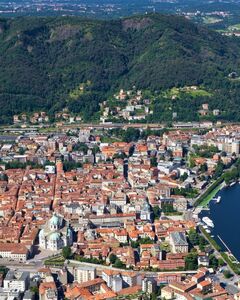
monuments near Taurus

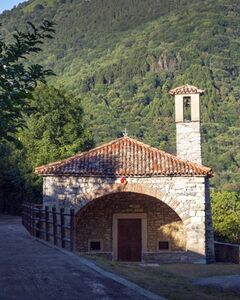
Originally a medieval church (XI century) but many additions and changes have taken place over the centuries. For several years it served as the parish church of Sormano, Caglio and Rezzago. The building, located at a higher level than the street,...

First mentioned the thirteenth century, but excavations, have unearthed remains of a chapel built in eleventh and the twelfth century and rebuilt in the fifteenth century. The bell tower has been dated to the second half of the eleventh century. A...

Built towards the end of 1300 to replace an existing chapel. The church, a single nave, built of local stone and brick, houses the remains of votive frescoes of the fifteenth and sixteenth centuries. It underwent two periods of restoration: one in...
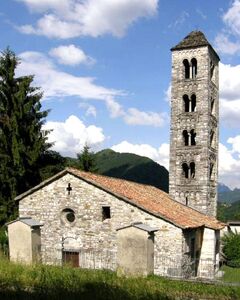
Romanesque in origin, but built on the foundations of a medieval church as demonstrated by archaeological excavations. Another testimony to its antiquity is the dedication to Saints Cosmas and Damian, doctors who were martyred in the fourth century...
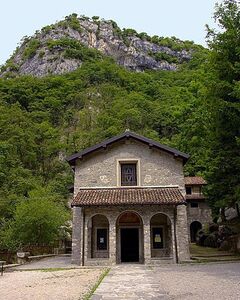
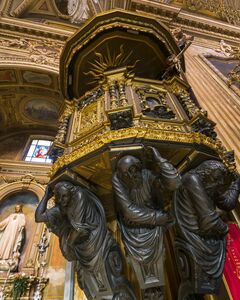
The village contains this interesting church that dates back to the 14th century. It has a fine Romanesque bell tower and a decorated Renaissance portal. An ancient chest behind the altar preserves a precious reliquary, a nail of the Holy Cross....

Built in the space of ten years from 1766-1776. Characterized by a bright interior with elegant harmonious architecture. The walls are like arabesque allegories and symbols of the Passion (spears, lanterns, nails ...). The four corners of the dome,...

Built in the Romanesque period, between the 11 and 12th centuries, but underwent many changes and expansions to its current appearance. It was the first parish church of Molina; over the centuries, the population of this village moved increasingly...

Outside of Lasnigo is the Romanesque church of Sant’Alessandro which lies on a slope boulevard flanked by an eighteenth-century chapels of the Cross. In ancient times the original church was built on a lower plateau. Then the bell tower was moved to...
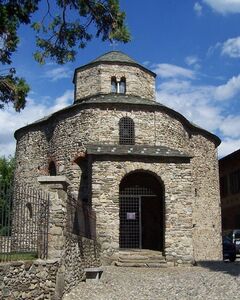
Includes the Basilica of St. Vincent and the Baptistery of St. John the Baptist and is one of the most famous monuments of Lombardian Romanesque architecture. The building, dated 1007, stands as one of the first accounts of the organic form of the...
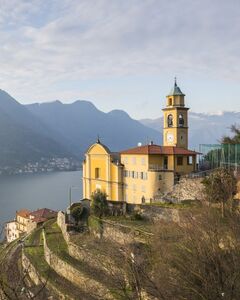
Built between 1723 and 1744 and consecrated by Bishop Albrici Pellegrini in 1764. The façade, in the Baroque style, is characterized by four pilasters and from the portal flanked by two niches and surmounted by a sundial. Above it is the date in...

Nestled in the woods of the Natural Reserve of Valle Bova, the hermitage is available to accommodate individuals, couples, priests, lay people, religious, who want to enjoy moments of silence and prayer....

The Romanesque church of St. Euphemia of Incino d'Erba is one of the oldest churches in the Larian Triangle, the province of Como and the Archdiocese of Milan. The church is located on the ancient road network that connected Aquileia Brescia,...
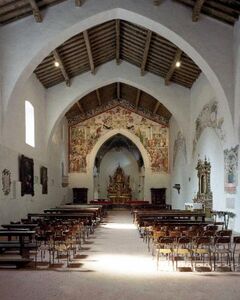
Also known as St. Anthony, as there is a preserved relic of the saint that is exposed to the congregation of the faithful every 17 January. The church was an integral part of the Franciscan convent of Santa Maria degli Angeli, founded in Crevenna at...
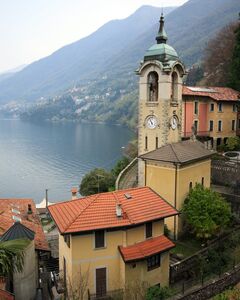
Church built between 1910 and 1931 in Palanzo, a small village above Faggeto Lario. The short hike affords great views of the lake from a a nearby park....

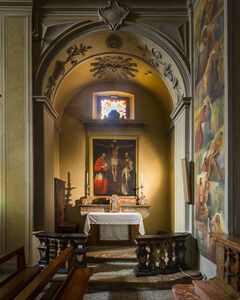
The construction of the church began in 1791 and ended in 1823 requiring the works of several architects: Clemente Isacchi, Giuseppe Pollack, Giuseppe Bovara and Simone Cantoni. The church hosts a crucifixion of 1879 by Mosè Bianchi and a painting...
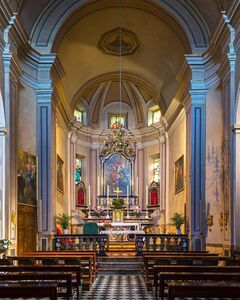
St. George, as with other holy warriors (Michael and Martin) was highly revered by the Lombards. The present church was built in the sixteenth century on the site of a former place of worship; it underwent other changes in following years,...
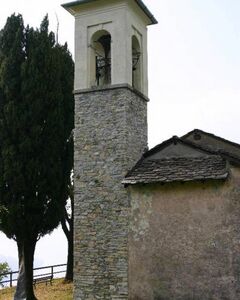
Built in the second half of the sixteenth century, this church was remodeled and expanded in later periods. Distinct for its large columns and the sixteenth round arches on the porch....
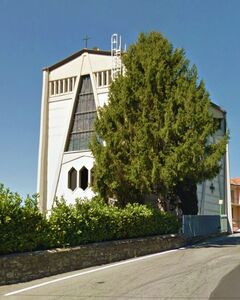
Temple of the Shrine dedicated to Our Lady of the Water Sports Prodigy. In a stormy crossing of the Adriatic, on the night of September 12, 1669, the family of Count Antonio Zancaropulo Berardo escaping from Crete, sought shelter in Venice. During...
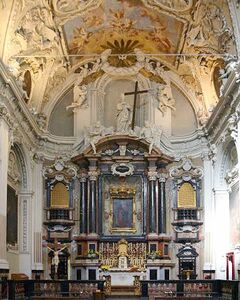
The S. Cecillia Monastery, built around the middle of the thirteenth century, from 1270 was driven by the Lucini family and support of the Franciscans and the bishop Leone Lambertenghi. The building lies on the Roman walls of the imperial age,...
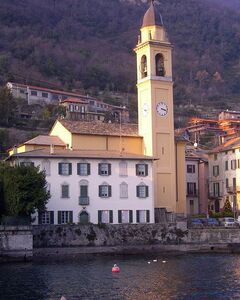
The parish church is located in the center of the country.Built in the seventeenth century, is decorated with prestigious and stucco friezes of Stefano Salterio (XVIII century) and also preserves works of painting and sculpture of the eighteenth...

Urio, the part of the town that lies south of Carate, is characterized by the Romanesque bell tower of the Saints Quirico and Giulitta church that stands close to the lake. Rebuilt in 1865 from an original Romanesque church with two towers and a...
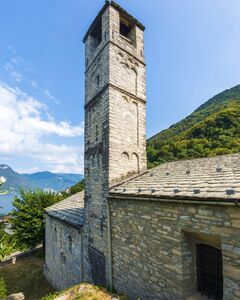

Built on location of a church dating back to the 16th century, Santi Epimaco e Girdino was completely rebuilt in the second half of the 18th century. The original parish church is located in the lower part of town, near the lake. For this reason,...
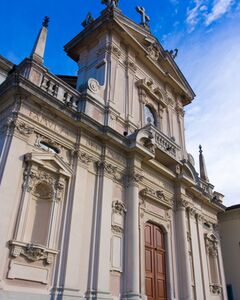
Occupying an enviable position high above the town of Como and Como branch of the lake, the church of Brunate contains a wealth of history and art. The centuries-old history of the church contains beautiful artistic works (the fifteenth-century...
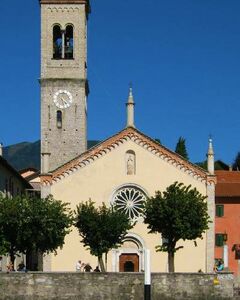
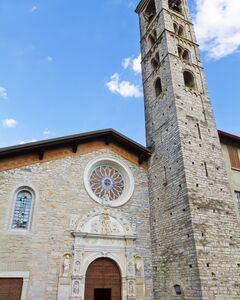
The village contains this interesting church that dates back to the 14th century. It has a fine Romanesque bell tower and a decorated Renaissance portal. An ancient chest behind the altar preserves a precious reliquary, a nail of the Holy Cross....

The church, that stands near the lake, contains interesting frescoes, and the outside is characterized by an open porch to the lake with a double lancetwindow and a tall stone bell tower. It was the church of the community, which remained...

These are considered as one of the greatest Romanesque architectural monuments in Europe and are part of a single Benedictine settlement. Important note: the Church can be reached only on foot walking for about 1 hour through a mountain path (300 m...
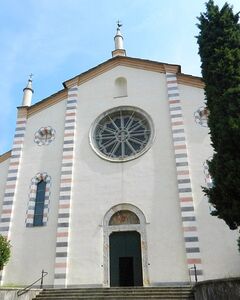
The church was founded in 1300 by two brothers Hermits of St. Augustine from Civilio, a village above Como, on land donated by a family whose members were later buried in front of the presbytery. It is the only example of Cistercian architecture...

Located in the middle of the walled town, the church was built between the 11th to the end of the 13th century and was possibly the first cathedral in Como. It features a complex planimetry including three short naves, provided with women's...
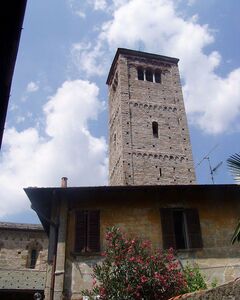
Built on a structure dedicated to Mercury and pagan cults. The first bishop of Como Felice changed the temple dedicated to a Christian church, in which he placed the mortal remains of Carpoforo. Located on the ancient Roman road connecting Como to...
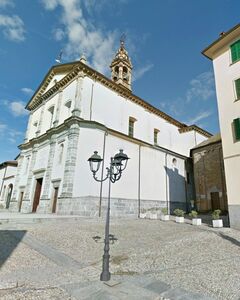
Considered one of the most important Lombard Romanesque monument of its kind. Inside it holds frescoes of the 15th and 16th centuries. The building has an octagonal plan and a semicircular apse dating back to the 11th century, although some elements...
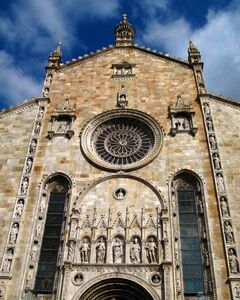
An omni-present feature of Lake Como’s skyline is the Como Cathedral with its white marble facade and imposing dome. The interior is equally spectacular boasting elaborate altar paintings, gargoyles and a magnificent dome. Como Cathedral (Italian:...
A series of modern frescoes (2007) painted on houses in the town of Taceno that endeavour to preserve traditions, legends and history of craftsmanship and commercial work. Unlike their counterparts in Parlasco that recount the legend of Lasco the...
Three tombs belonging to the aristocratic Andreani Family located outside the Church of St Thomas of Beckett and a castle belonging to the same family. The monuments, know as “arks” are important evidence of Lombardy sculpture that were erected...
It’s a boulder of pyramidal shape that owes its curious name to a crescent engraved on one side, of natural origin, accompanied by the letters PLDB (Moon Stone of Bellagio) and the date 1782, which commemorates the end of a period of dispute between...
Monument to commemorate the victims of World War II and resistance movements. The monument is a project of Milan sculptor Gianni Colombo. It is located in a park by the lake. It combines stones from Nazi concentration camps and city of Hiroshima...
Daniel Libeskind created this dazzling 16.5 meter (54 feet) high stainless steel sculpture near Piazza Cavour, Como. The public monument, the first contemporary work ever to be installed in Como, is an homage to famed scientist Alexander Volta who...
Parlasco is one of the smallest Italian towns located in the Regional Park of the Northern Grigna in Valsassina. It is on the main road connecting Lake Lecco to Valsassina and joins Alpe Cainallo with Cortenova. Myth and reality are perfectly mixed...
Born in Como, Alessandro Giuseppe Antonio Anastasio Volta was an Italian physicist credited with the invention of the first electrical battery, the Voltaic pile, which he invented in 1799. With this invention Volta proved that electricity could be...
Immediately after the death of Alessandro Manzoni on May 22, 1873, the City Council of Lecco met and approved a monument to the writer that had given so much prestige to the city. The committee, headed by Antonio Stoppani, collected donations for...
Located in a churchyard, this statue represents a man in the act of throwing a large stone. The monument reminds locals of a battle in Libya in which alpinists of Brienno fought. The battalion Morbegno, all composed of soldiers from the lake area,...
Monument dedicated to the weaver of Francesco Somaini, where on the banks of the river Senagra, had one of its oldest and most prestigious silk factories. In the marble top is a negative image of a weaver, while below is fabric draping to the ground....
Sculpture dedicated to disabled service people. Roughly translation on the plaque goes like this: "One hand is actively serving the country in defense of institutional values. The other hand is wounded in the line of duty." The monument is the most...
In 1931, Giuseppe Terragni and his brother were asked by the fascists to design a monument for the victims of World War I. Their design was based on a sketch of the Italian futurist Antonio Sant'Elia, whose sketches showed modernity, dynamics and...
Here, a black cross marks the spot where Benito Mussolini was shot and killed (along with his lover Claretta Petacci) by partisans, marking the last stand of the Fascist dictator's rule over Italy. Actually, he wasn't really the ruler of Italy at...